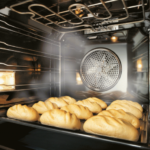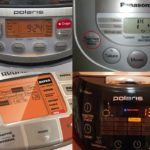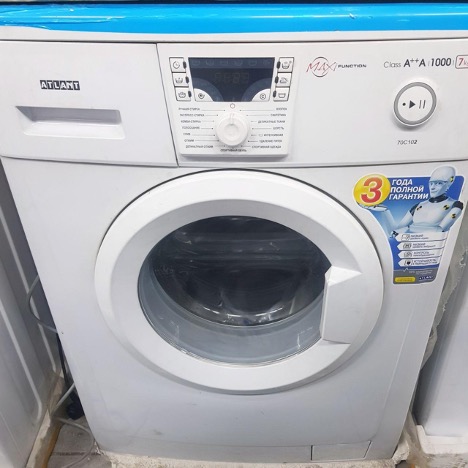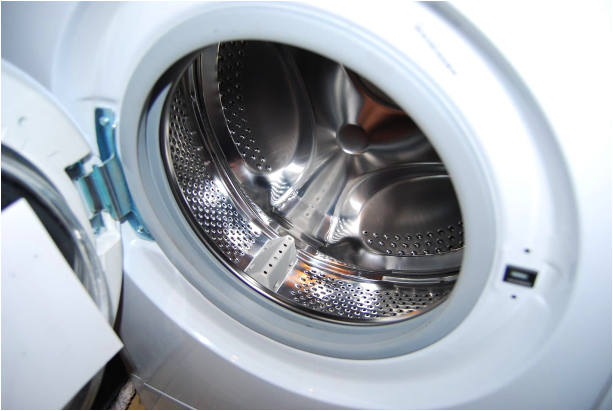Determining which energy consumption class is best for a washing machine
When purchasing a new model, among other things, the question arises about which energy consumption class is best for a washing machine. This indicator means how much electricity the unit will consume within an hour to process 1 kg of clothing. The article describes in detail what classes there are and what affects consumption.
The content of the article
What does energy class mean?
This is a very important technical indicator, by which you can understand how much electrical energy the machine will consume within 1 hour, subject to a load of 1 kg. Every modern device has a similar criterion, for example, a refrigerator or dishwasher.
The energy expended is measured in Watts, calculated per 1 hour. Moreover, it is usually denoted in kilowatts. For example, if the consumption is indicated as 0.19 kW/h, then the unit will consume 0.19 kW for 1 hour. If the washing machine processes 6 kg (maximum load for many models), the consumption is multiplied by 6, that is, it will be 1.14 kW.
But to make it easier for consumers to navigate this indicator, manufacturers have introduced special letter designations. With their help, the energy efficiency class of washing machines is determined.
What are the energy consumption classes?
The class designation is the same for all devices. It is associated with letters, the number of pluses “+” and color:
- green – the most economical consumption;
- yellow – average efficiency;
- orange is one of the more expensive options;
- red is the most disadvantageous class.
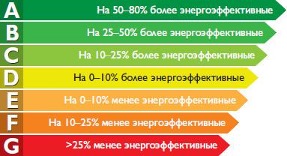
We can say about the energy consumption class of washing machines that this is an important criterion that you should always focus on when purchasing. A detailed description of each letter looks like this:
- A++: the best option, such devices consume no more than 0.15 kW per 1 hour, subject to a load of 1 kg.
- A+: consumption reaches 0.17 kW/h.
- A: costs no more than 0.19 kW/h.
- B – electricity is consumed in the amount of 0.19-0.23 kW.
- C - in this case, from 0.23 to 0.27 kW is spent on washing each kg.
- D – consumption increases to 0.27-0.31 kW.
- E - expenses in the range of 0.31-0.35 kW.
- F – flow rate from 0.35 to 0.39 kW.
- G – very high consumption (more than 0.39 kW per kg).
If we designate all types of classes on a common scale, we get the following diagram.

Spin class
When choosing a model, it is recommended to take into account such indicators as the spin class and energy consumption. This refers to the consumption of electrical energy during the spinning process. The principle is exactly the same: the best option is A, the worst is G.
It is better to choose models with the designation “A”. In this case, after intensive rotation of the drum at the end of washing, the mass fraction of moisture in the clothes is no more than 45%, that is, even less than half. Such laundry will dry completely in just 3-4 hours, and if it is small in size, then in 1-2 hours.
Factors affecting electricity consumption
It is important to understand that the theoretical classification of washing machines by class may differ slightly from the actual results. Therefore, in the description or in the device passport you need to find the value based on the test results.If the unit is well-assembled and manufactured by a well-known brand, these discrepancies are minimal.
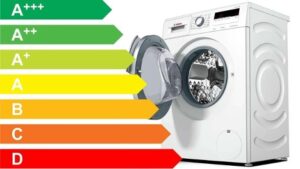
The main factors that can increase electricity consumption include:
- Features of the mode - for example, when choosing a delicate wash, the process takes longer, which means the consumption increases.
- Overload - it is better to put a little less laundry, for example, not 6 kg, but 5.5. This is useful not only in terms of electricity costs, but also in terms of uniform load distribution, wear of the drum and other parts.
- The period of operation - the longer it is, the greater the consumption, since various elements wear out and scale forms on the heating element.
Thus, it is best to purchase washing machines with energy consumption class A. The higher quality the model, the lower the electricity consumption to achieve the desired effect. To preserve the device, it is recommended to take good care of it, periodically carry out diagnostics, clean the heating element from scale, and if an error occurs, immediately eliminate it yourself or contact a specialist.


